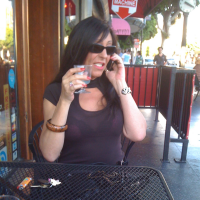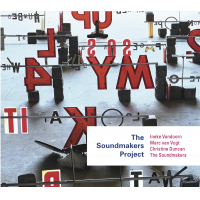Home » Jazz Musicians » Yusef Lateef
Yusef Lateef

Renaissance man Dr. Yusef Lateef was born William Emanuel Huddleston in Chattanooga, Tennessee on October 9th, 1920. At the age of 5 he moved with his family to Detroit. Growing up in Detroit he came in contact and forged friendships with many a giant of jazz such as Kenny Burrell, Milt Jackson, Tommy Flanagan, Barry Harris, Paul Chambers, and Donald Byrd. By the time he graduated from high school he was a proficient tenor saxophonist. He started soon after graduation playing professionally and touring with different swing orchestras among them those of Hot Lips Page, Roy Eldridge and Lucky Millender. In 1949 he joined Dizzy Gillespie’s orchestra (using the stage name William Evans), and stayed with them for one year. In 1950 he returned to Detroit and to enrolled in the Wayne State University’s Music Department and studying composition and flute. During his tenure at Wayne State he converted to Islam and changed his name to Yusef Lateef. He stayed in Detroit until 1960 and during this decade he led his own quintet for a while, recorded his first album as a leader for the Savoy label, Stable Mates, and furthered his musical education by studying oboe with Ronald Odemark of the Detroit Symphony Orchestra.
In 1960 he returned to New York and enrolled in the Manhattan School of Music to further his studies in flute and music education. Over the next 10 years he recorded several records as a leader and played on many more under other musicians’ leadership, toured with Charles Mingus, Cannonball Adderley, Miles Davis, Dizzy Gillespie and Babatunde Olatunji and obtained a BA in music and a MA in music education. Among the highlights of his recording career from this decade are Eastern Sounds, Live at Pep’s and The Golden Flute. One can already hear on these records the incorporation of different eastern musical influences into the more straight-ahead jazz idiom. These albums also are one of the first places one can hear Dr Lateef play different reed instruments including the bassoon, bamboo flute, shanai, shofar, argol, sarewa, and taiwan koto. During the 70s he taught courses in autophysiopsychic music (which comes from one’s spiritual, physical and emotional self) at the music theory department in the Manhattan School of Music. From 1972 till 1976, he was an associate professor of music at the Borough of Manhattan Community College.
In 1975 he was awarded a Ph.D. in Education from University of Massachusetts in Amherst, MA and he continues to be a professor there. Suite 16 or Blues Suite, Dr. Lateef’s first work for large orchestra, premiered in 1969 at the Georgia Symphony Orchestra in Augusta and it was performed in 1970 by the Detroit Symphony Orchestra at the Meadowbrook Music Festival, and recorded by the WDR Orchestra in Cologne. The NDR Radio Orchestra of Hamburg commissioned him to compose the tone poem "Lalit," in 1974. He also recorded his Symphony No.1 with the same orchestra later that year. He has toured the world with his ensembles and other musicians performing in concert halls and music festivals.
Read moreTags
Yusef Lateef: Atlantis Lullaby - The Concert from Avignon

by Stefano Merighi
Tra gli outsider del jazz più prolifici, Yusef Lateef fino alla scomparsa (a 93 anni nel 2013) ha continuato a comporre, incidere, sempre evitando con gentilezza di essere accostato alla parola jazz, inventando invece il termine “autophysiopsychic" per descrivere una musica che fin dagli anni Cinquanta ha messo in contatto molto seriamente la cultura asiatica con quella afro-americana (Lateef ha soggiornato quattro anni in Nigeria negli anni Settanta), lontano dall'industra musicale, vicino invece alla didattica e creativamente proteso verso la ...
Continue ReadingCTI Acid Jazz Grooves by Various Artists

by Arnaldo DeSouteiro
The CD you are holding in your hands is a very special compilation. It's the celebration of CTI as one of the most “sampled" labels on Earth! For the past ten years, many CTI tracks have been cut up, sampled, scratched and looped to create new songs for a new audience. Many of the selections on this album (all of them produced by Creed Taylor and engineered by Rudy Van Gelder) represented the basic inspiration and major influence in the ...
Continue ReadingYusef Lateef: Atlantis Lullaby - The Concert From Avignon

by Pierre Giroux
Yusef Lateef's performance in Atlantis Lullaby is a masterclass in communication and demonstration of synergy. In this previously unreleased performance recorded in Avignon, France in 1972, Lateef, on soprano sax, tenor sax and flute, is accompanied by Kenny Barron on piano, Bob Cunningham on bass and Albert “Tootie" Heath on drums. This two-CD package is being released by Elemental Music and produced for release by Zev Feldman. It contains a 23-page booklet with stories and reminiscences about Lateef from Feldman, ...
Continue ReadingOJC Bop and Beyond: The Cats and Yusef Lateef

by C. Andrew Hovan
As Craft Recordings continue to mine their vast collection of recordings, their new take on the decades old Original Jazz Classics imprimatur continues to offer up inspired selections worthy of wider recognition. What also sets these reissues apart is superb quality control, with remastering done by Kevin Gray and pristine pressings that in many cases offer the last word in sonic brilliance. Tommy Flanagan The Cats Craft Recordings 1959 Although it was actually ...
Continue ReadingThe Jazz Detective Strikes Again

by Mark Corroto
Producer Zev Feldman, like Joe DiMaggio, has done it again. In May of 1941, DiMaggio began a major league baseball hitting streak. People followed his exploits game after game and hit after hit. DiMaggio's amazing record of 56 consecutive games still stands to this day. Same can be said of Feldman. His detective work, finding rare archival jazz recordings (mostly concert dates) in dusty archives, continues a streak that includes music from Bill Evans, Wes Montgomery, Albert Ayler, Eric Dolphy, ...
Continue ReadingSoundtrack To A Movement: African American Islam, Jazz, and Black Internationalism

by Ian Patterson
Soundtrack To A Movement: African American Islam, Jazz, and Black Internationalism Richard Brent Turner 256 Pages ISBN: 9781479806768 NYU Press 2021 The influence of Islam on African American jazz musicians post-WWII and the influence of those musicians in the spread of Islam in American cities are interrelated topics that, broadly speaking, are not part of most mainstream histories of jazz. Weave Black internationalism into the equation, that's to say how pan-global liberation/anti-colonial movements ...
Continue ReadingYusef Lateef: An Alternative Top Ten Albums Blowing Cultural Nationalism Out Of The Water

by Chris May
A pioneer of global and modal jazz, the multi-instrumentalist and composer Yusef Lateef is only beginning to have his importance in the history of the music properly acknowledged. After languishing off-catalogue for decades, much of his output is being made available once more. A treasure trove of great jazz is out there waiting to be rediscovered. Lateef was born in Chattanooga, Tennessee. When he was five, his family moved to Detroit, where he began his career playing in ...
Continue ReadingYusef Lateef (1920-2013)

Source:
JazzWax by Marc Myers
Yusef Lateef, a saxophonist and flutist who was one of the last surviving members of Dizzy Gillespie's 1949 big band and who helped pioneer spiritual jazz in the mid-1950s, soul-jazz in the 1960s with Cannonball Adderley, and metaphysical jazz starting in the 1980s, died on December 23. He was 83. Yusef was among the first black jazz musicians to covert to Islam in 1948 through the Ahmadiyya Muslim movement and in later years eschewed the word “jazz"—viewing it as derogatory ...
read more
Yusef Lateef, R.I.P.

Source:
Rifftides by Doug Ramsey
The roll call of distinguished jazz artists leaving us seems to grow longer by the day. Now comes news of the passing of Yusef Lateef, who died today in Detroit. He was 93. As a youngster in Detroit, Lateefmastered several reed instruments and early in his career became a respected performer, composer and educator. He was an inspiration and model for a generation of young Detroit musicians who in the 1950s moved to New York and themselves became influences in ...
read more
Other Places: Yusef Lateef

Source:
Rifftides by Doug Ramsey
At 92, Yusef Lateef continues to earn universal admiration not only for his artistry as a saxophonist, flutist, oboist and composer, but also for the warmth of his personality and eagerness to share his musical knowledge, which is wide and deep. Thanks to Rifftides reader Harris Meyer for alertingme—and you— to a recent installment of the radio program American Routes. Lateef told host Nick Spitzer about his career, his music and his philosophy. In his early development as a professional, ...
read more
Yusef Lateef @ 90

Source:
The Independent Ear by Willard Jenkins
Some years ago the Jazz Journalists Association, as a tribute to friend and colleague the late Harlem jazz writer Clarence Atkins sponsored a group of aspiring African American music writers to attend a journalism conference in California. I'm happy to say that for the most part they have continued to write particularly on jazz, and in fact two of them—Bridget Arnwine and Rahsaan Clark Morris—contributed to The Independent Ear's ongoing African American writers' series (continued with Karen Chilton in this ...
read more
Yusef Lateef 85th birthday benefit for the Give Hug Foundation

Source:
All About Jazz
Label Reissues MJQ, Charles Mingus & Yusef Lateef In Gallery Series

Source:
All About Jazz






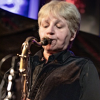




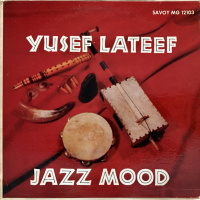
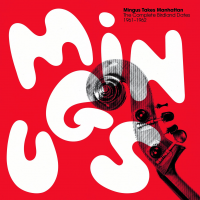




















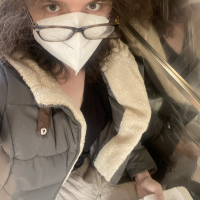

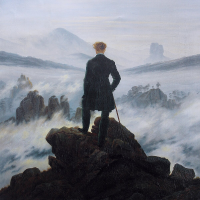

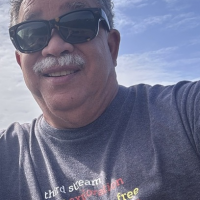
_with_Skip_Mcdonald_(Right)_23_n.jpg)




